Estimated reading time: 15 minutes and a half.
April/2015 - The Sigmas DP# Merrill are by far the most controversial cameras I own. You either love them or hate them. They are fitted with a revolutionary Foveon X3 image sensor capable of capturing color and light data in a novelty way very different from standard Bayer cameras, with much higher sharpness on the pixel level and with deeper colours that no one can match. But is it worth it? Is it a game changer? Neither Sigma can answer, but did define it: “the DPs are philosophical tools for individual artistic expression, with emotional qualities”. WTF?
What happen is photodiodes are not capable of measuring color. So traditional cameras fit 2 pairs of pixels coloured with red and blue filters, and two green ones, creating a RGGB mosaic called “Bayer array”. After the exposure this puzzle is used by the computer to create the image on a process called demosaicing, where every pixel is interpolated with each other. A low pass filter with an anti-aliasing effect is used to avoid moiré, and the picture is essentially blurred from the camera, although some models got rid of it recently. But there’s no way out: only 50% of your pixel count is used for details, and the rest 25% blues and 25% reds are used for colour guessing.

The Bayer array: 50% green for light and only 25% red and 25% blue are used for colors. Credits: foveon.com
The idea behind the X3 is to take advantage of the silicon wafer property to allow different light spectrums to penetrate different depth within the sensor. So three distinct photodiodes are staked together, one measuring a different RGB input, what Sigma calls a “direct image sensor”. On the Merrill Foveon X3 generation, there are staggering 45 millions photodiodes on an APS-C chip, with a spatial resolution of 4800×3200 in three layers (15MPx3=45MP). In the end your files will have just 4704×3136 pixels, but each one of these pixels will have an exact value of color and details. Without demosaicing nor the need for a low pass filter, the photos are much sharper than other cameras.

Foveon X3: 100% RGB values for colour and details. Credits: foveon.com
One problem is the volume of data is so absurd that Sigma honestly isn’t the best company to deal with such idea. When the Foveon tech was introduced in 1999, it promised to revolutionise the portrait market with a complete laptop attached to one of these sensors, with large processors plugged to an outlet; all for US$27.000! But Sigma decided to create a series of premium compact cameras that just can’t deliver the same usability as modern cameras. All DPs are slow, their batteries won’t last more than 70 shots, and the post processing requires a proprietary software. So you either love it or hate it. I decided to love and bought all three DP Merrills.
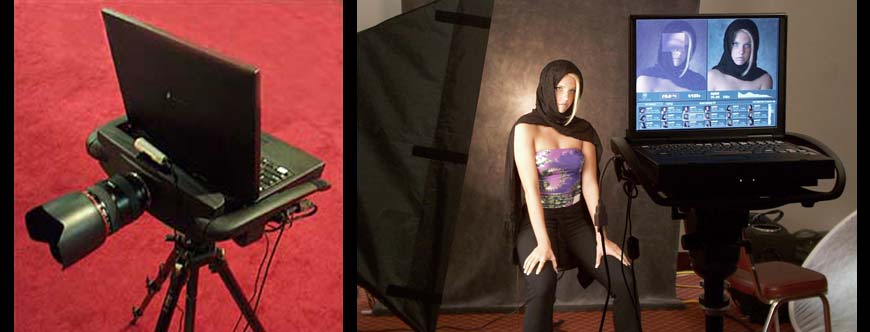
The “Foveon laptop” from 1999: US$27.000 and a mount Canon. Credits: foveon.com

And the three Sigmas DP1, 2 and 3 with a Merrill Foveon X3; APS-C compacts with prime lenses.
It all started in 2012 with the DP1M at the Wukesong Camera Market in Beijing. I walked for over an hour under the -18ºC of the chinese winter to get to a mega-stand-xing-ling-center that is nowhere near a subway, in a neighbourhood where no taxi driver speaks english, in a place dominated by Canon and Nikon; all to find no one who spoked english. Try saying “Sigma di-pi-wən-ɛm” from chinese to chinese to see if they understand you; it’s tragical. But out of nowhere I found actually a DP2M in a window, made a happy dance and bought it; although it wasn’t quite what I was looking for. And I confess I thought its performance was sh*t when reviewing the photos on the LCD.

Wukesong Camera Market: if you see Jackie Chan, you’re there!
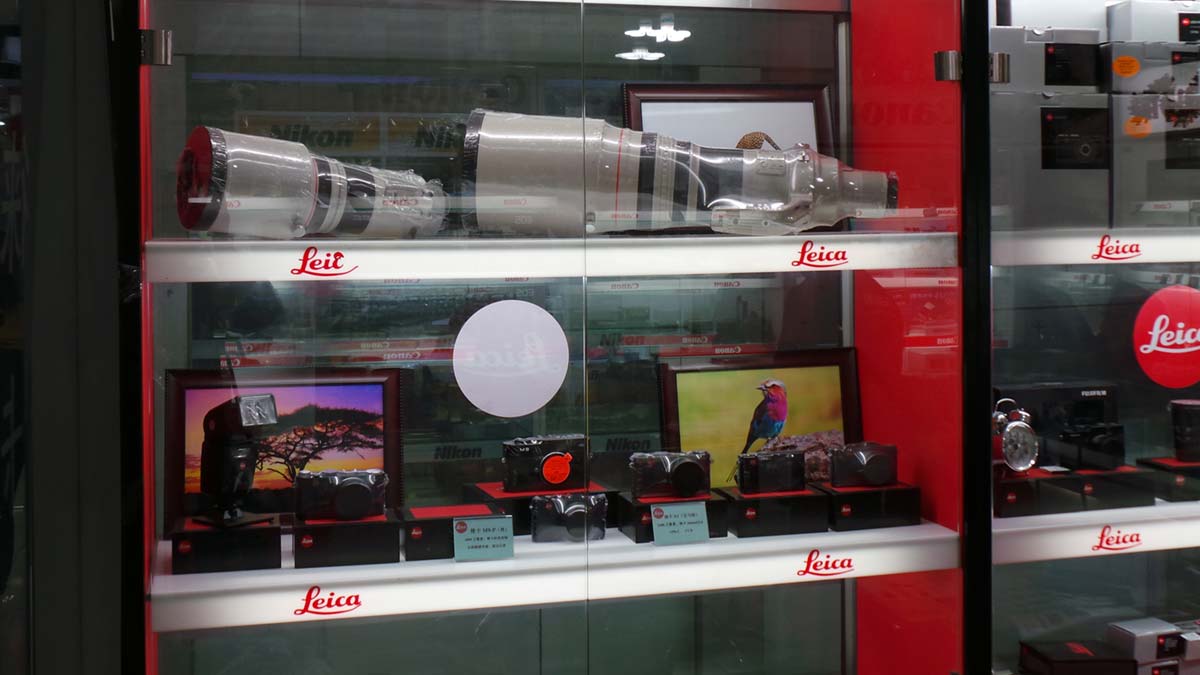
The chinese way to sell: Canon L in a Leica window, wrapped in film plastic. :-D
The search for the DP1M continued on the same year in another country, when I casually typed “camera store” on Singapore’s Google Maps. It showed me SIM LIM SQUARE, equivalent to Beijing’s Wukesong, but tidy, looking like a mall. And there I went asking from store to store about the Sigma camera. It was much easier: the malaysian people understands english and the first store had it in stock. I bought one without thinking twice and found its photos to be the same sh*t on the LCD: not that impressive sharpness and very far behind similar APS-C cameras under low light.

SIM LIM SQUARE (in CAPS): Singapore’s largest electronic mall. Six levels and escalators!
Only after my first masochist experience with Sigma’s Photo Pro software that I realised: the resolution and colours on the computer screen were spectacular, especially compared side by side with another APS-C camera, the EOS 60D, besides its higher resolution and using a similar focal length. The DP Merrill were much, much, much sharper. The photos looked “real”, with a pixel by pixel contrast I had never experienced. All seemed blurred on other cameras sided by the Foveon. Every dot on my computer screen was a real pixel. I was converted.

100% crop, Canon EOS 60D at left and Sigma DP1M a right. No, wait… o_0
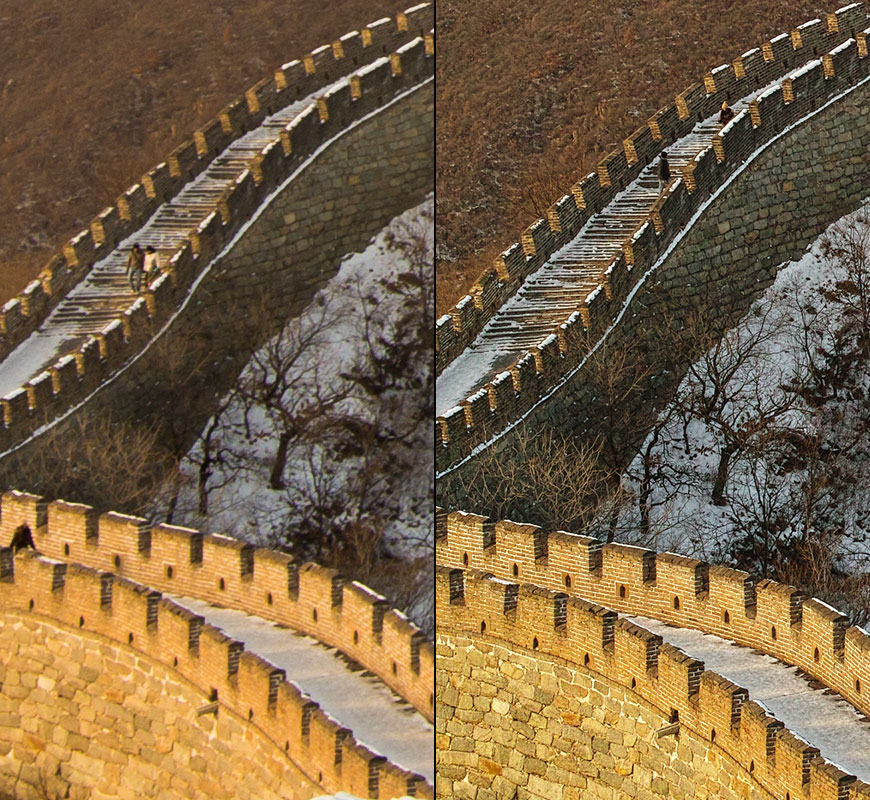
100% crop, Canon EOS 60D at left and Sigma DP2M at right. Dear lord! O_o

100% crop, Canon EOS 60D at left and Sigma DP2M at right. Motherfucker! O-O
Last but not least, the DP3M was easier to purchase. B&H Photo always had all three models in stock and the US$300 discount sealed the deal to complete the family now in 2015. I found myself on the Foveon X3: the raw resolution is amazing for large prints, its colours are much nicer looking than Canon and Nikon for landscapes, and the black and white conversion is fantastic. I’m emotionally attached to it and Sigma was right: only your emotions will decide either you’ll love or hate a DP# Merrill. If you give it a chance, I wish you good luck, lots of patience, and nice reading!

I’ll describe in general the build quality of all Sigmas DP# Merrill because the three are virtually identical. Inside they feature the same “Merrill” generation APS-C Foveon X3 with 45MP (15MPx3) and two TRUE II processors. And on the outside each model sports a different prime lens: DP1M with a 19mm f/2.8 (28mm equiv.), DP2M with a 30mm f/2.8 (45mm equiv.), and DP3M with a 50mm f/2.8 Macro (75mm equiv.); weighting 340g, 329g e 400g respectively. Each lens have a different shape and the DP3 Merrill is the largest one because the built-in macro mode needs more space. But on a daily basis they all look and behave the same.
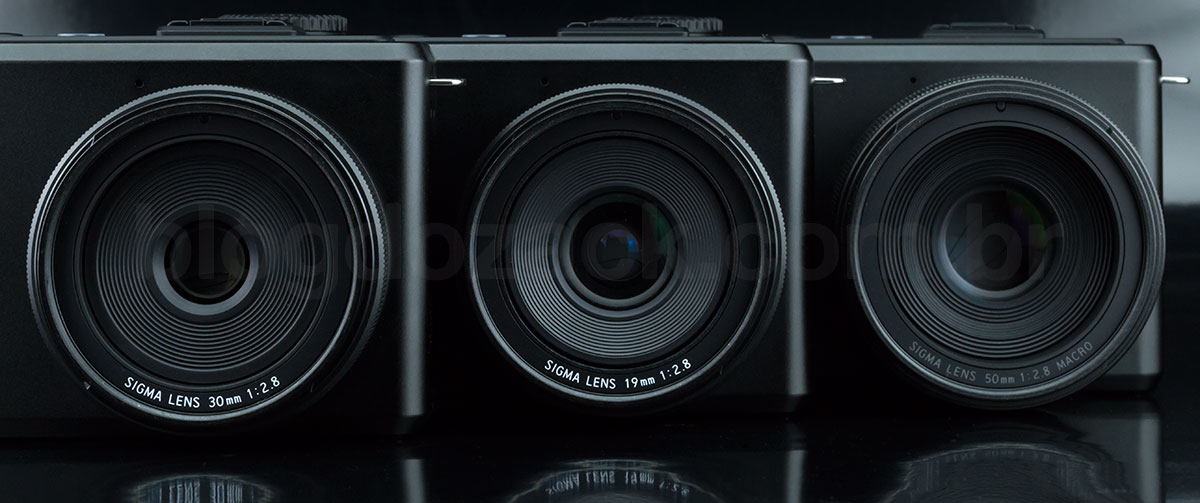
Built in “space-grade aluminium” (?), the feeling in your hands is hollow because they are much larger than the weight suggests. Similar to an iPhone 5 dimensions at 12.2cm x 6.6cm, the smallest is the DP2M at 5.8cm deep, and the largest is the DP3M at 8.1cm. Its design is sober and reminds a metal block instead of an fashionable-hipster-modern camera: no retro styling, no SLR grip in the front, nor moulded rubber at the back. It is very sleek to dissipate heat in the more efficiently.
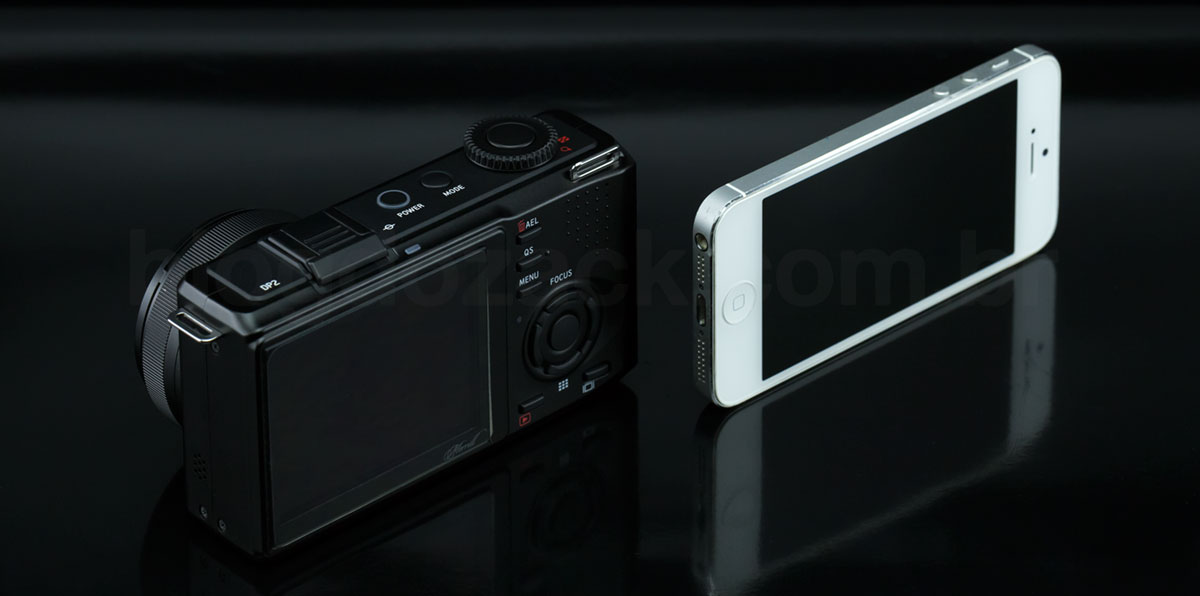
That’s why Sigma avoid extras like an electronic viewfinder, wireless connections, swivel touch screens, a built-in flash or even a LED focus assistant. It was all left out of it to keep the right temperature inside. If it seems like a kamikaze decision, it is! From the get-go all DP# Merrill are exceeded by other cameras with no “entertainment” for the photographer. If you want a toy to brag to your friends or shoot your kids on the weekends, these cameras aren’t for you.

With so much simplicity at least the build quality is excellent and we quickly realise we’re dealing with a tool. You notice how the buttons have a precise “click” feedback, better than the sticky buttons on the back of a Sony RX1R. At the top the POWER button is surrounded by a LED, sided by the MODE selection one. And at the right the two levels shutter release can lock your AF + AE first, then take the photo when fully pressed. Around it there’s the main, rubberised jog dial for exposure setting, and it’s well built, with no wobbling whatsoever.
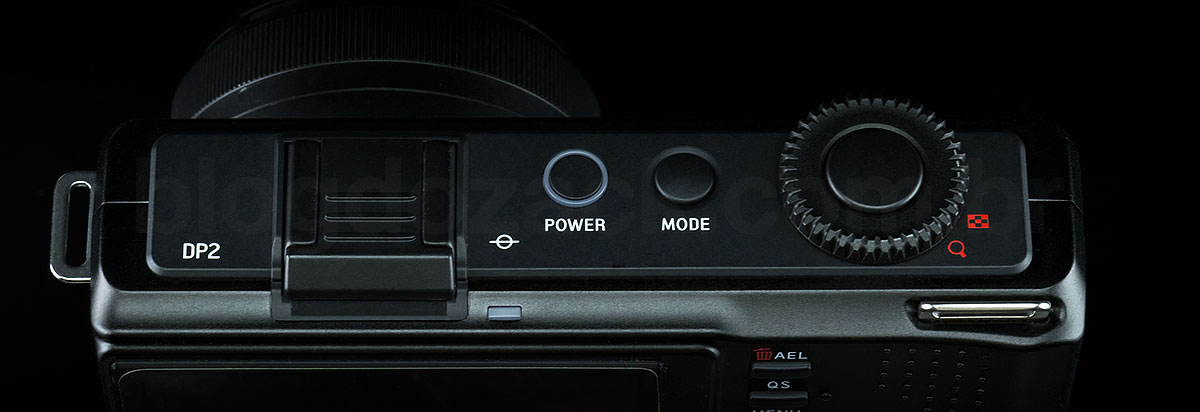
At the back we have the 920k 3” LCD screen. It’s not touch sensitive, there’s no light nor proximity sensor, and between the outer plastic and the electronics there’s a huge gap, perfect for internal reflections. So it’s not good under direct sunlight. And besides the good pixel count, the real time rendering of Foveon’s 45MP is awful. Any fine line flickers because of the great aliasing. Sigma just haven’t developed a processor that can handle so much data in real time, and it looks ugly. It’s near impossible to make sure the AF got the focus right and what the colours will really be in your files. On the other hand during playback and menus operation, it looks better than a Leica M9.

At the right there’s a customisable AEL button to lock exposure, or lock focus on the center point (AFL), or to do both. The QS button loads tow “quick setup” overlay menus to set ISO, WB, self-timer etc, all customisable as well. And last there’s a MENU button that loads a TAB system just like Canon’s EOS. At your thumb there’s an OK central button surrounded by four directions. And at the bottom the playback button can turn the camera just for photos reviews (press it for two seconds), and a “display” button to circle through some infos, or even shut the LCD down.
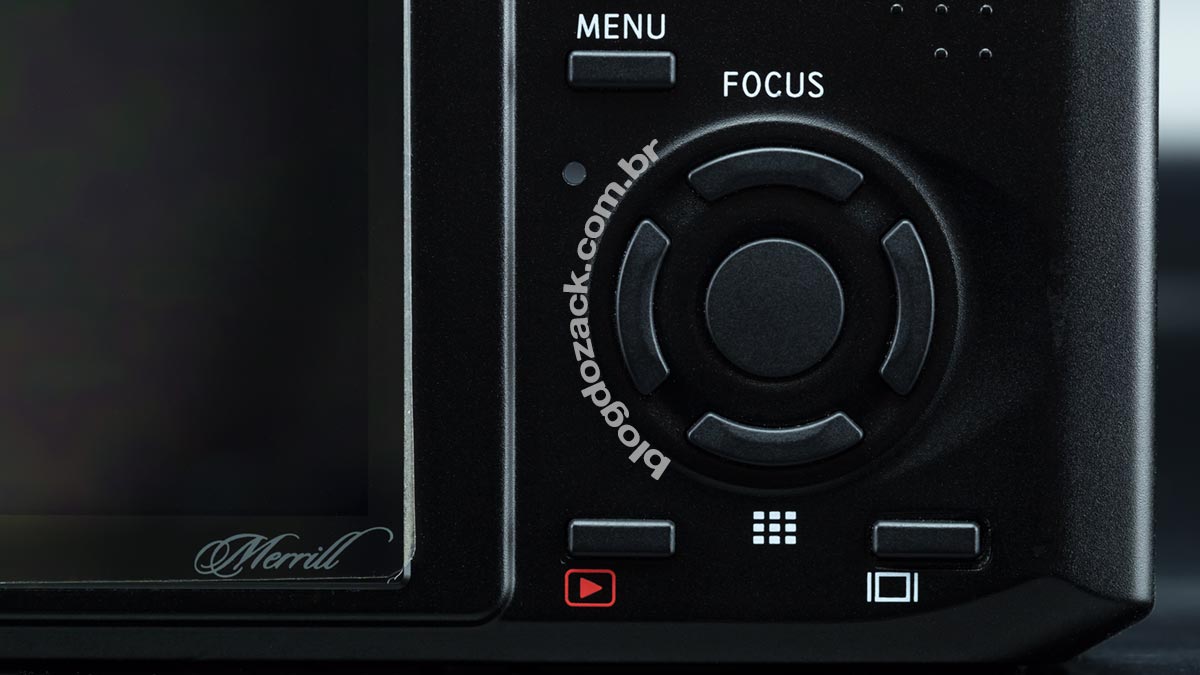
I won’t bother explaining each button and menu as they’re all customisable. Highlights go the full last setting memory between each on/off cycle, so you won’t have to complete reset your camera if you’re trying to save some battery. In M mode the shutter speed and aperture setting are between the jog dial and the left/right buttons at the back, very intuitive. And I once again say that the click feedback on every button feels more “professional” than most compacts. They won’t stop working after a few years (hello, Sony), nor were substituted by a touch screen that won’t work with gloves.
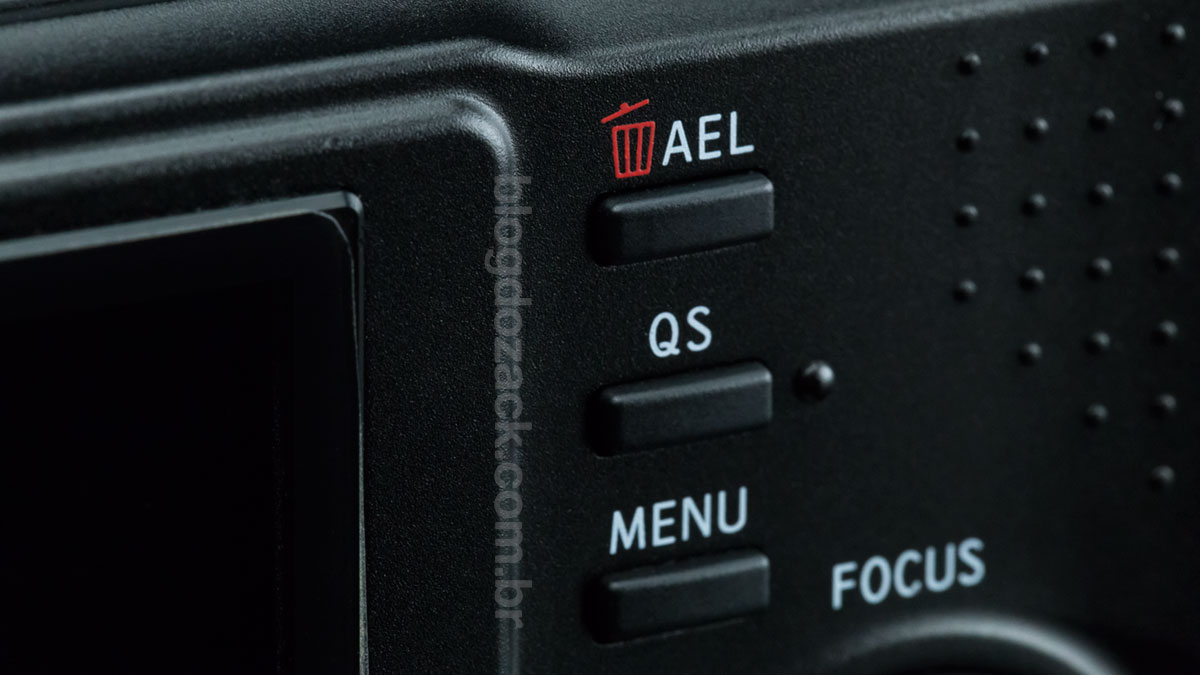
On a daily basis everything is simple and functional. The contrast type AF obviously won’t keep up with moving objects. But at least it’s precise and quick with static objects. The 1250mAh batteries won’t last more than 70 shots, that is awful, until you remember the processing required to output the 50-60MB files from this sensor. So you get two batteries in the box, enough to use one while the other charges. I own all three DP models so I have six batteries with me for a full day of photos. The US$3000 RX1R doesn’t even come with a wall charger, go figure.
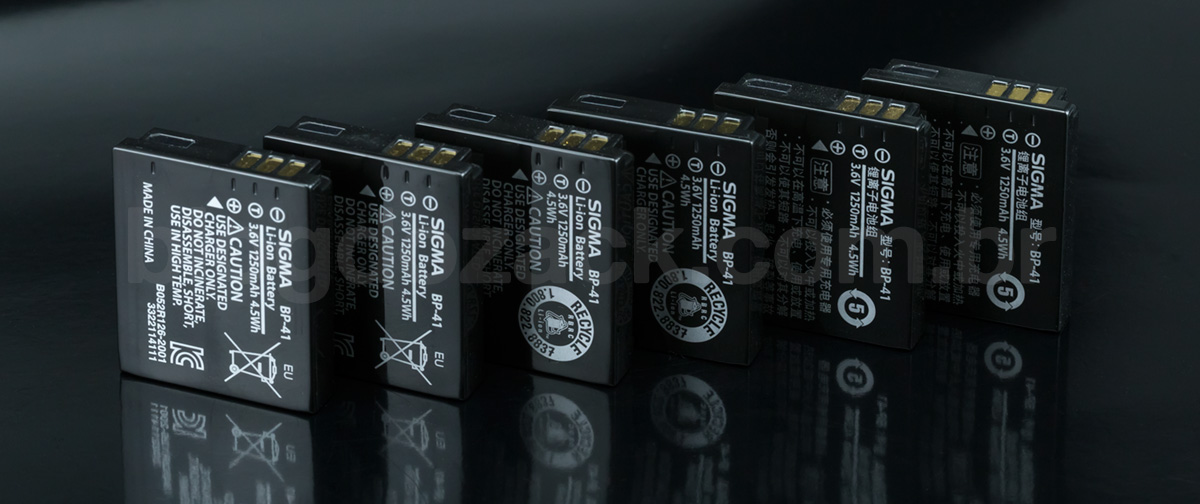
And the video mode and ports are laughable. No, the Sigmas DP can’t record HD movies and the VGA 640×480 shouldn’t even be there. Take your smartphone to record videos. And there’s no HDMI port as the VGA video wouldn’t actually use the “HD” on the “MI”. And the USB 2.0 port is jurassic, with a plug I’ve only seen on Panasonic’s GF3. It’s all very simple, but did Sigma made something really bad with the DP Merrill line or we just have an specialised, small, pocketable system?

As controversial as the Foveon X3 tech and the DP# Merrills usability, is the processing of raw .X3F files. It’s done exclusively on Sigma’s proprietary Photo Pro software and I must recognise as another difficulty to work with these cameras. The SPP actually runs ok on the latest 6.0.3 update, lagging less than the prior 5 version. But it just won’t behave like a Photoshop or Lightroom package, and no OS supports the format; so no thumbnails on your file system. It is all done on the SPP and it’s actually on the same class as other camera brand software like Canon’s Digital Photo Professional: outdated UI, questionable performance, very different from good’ol Adobe’s suite.
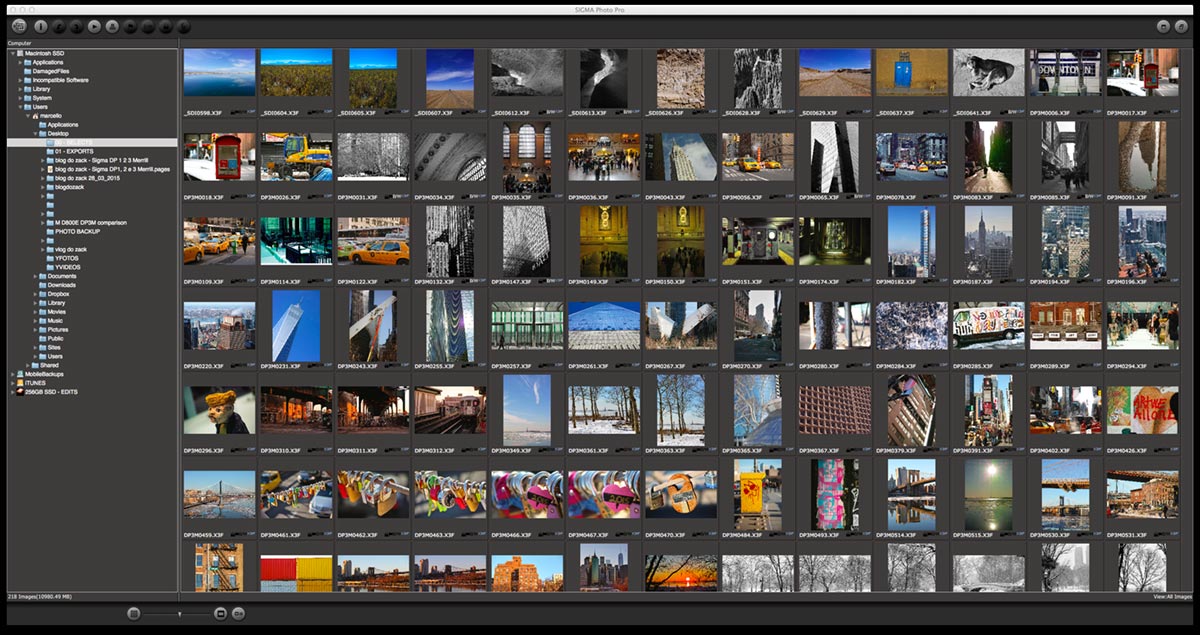
What happens is the 45MP files make any computer raise a white flag when exporting full resolution files; just as Photoshop does when working with as large files. The difference is Adobe’s Mercury engine can handle proxy files while working with exposure, color and contrast adjustments. And Sigma’s Photo Pro can’t: it will calculate the whole file at any click on the sliders, making you wait 8 to 10 seconds for an update on the screen. It is sluggish and takes forever. F*cking forever. But I do have some suggestions to make it a bit quicker.
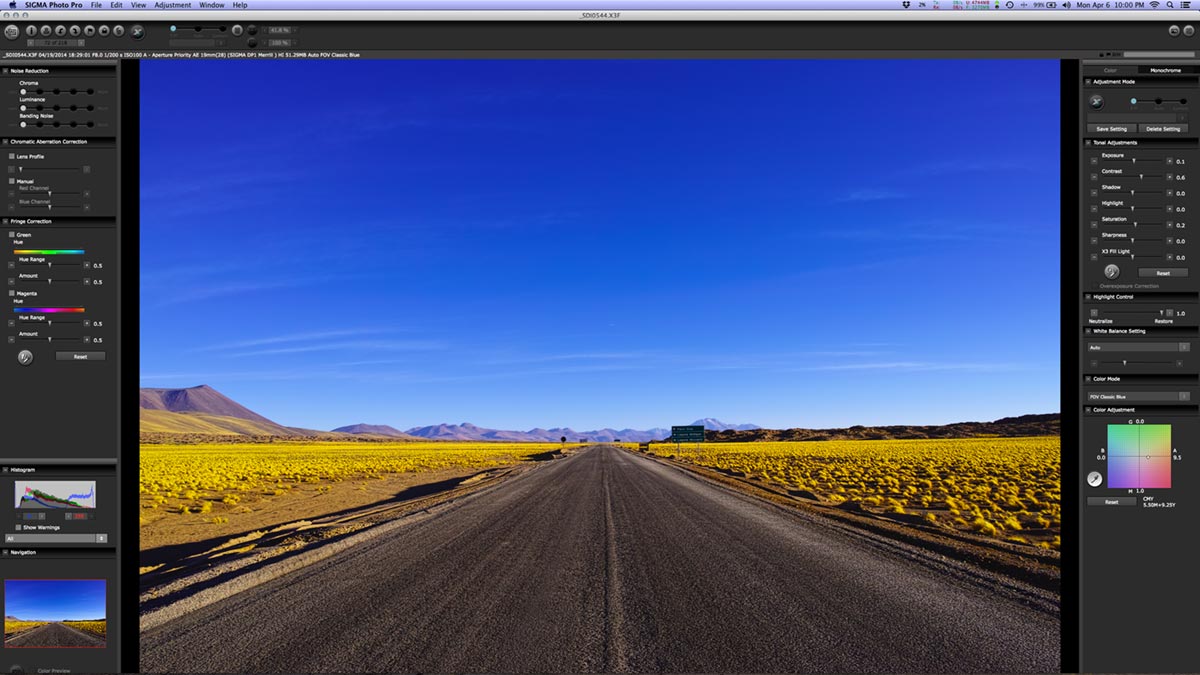
First there is indeed a “Display Speed Priority Mode” that works with some of the file data, depending on your display resolution. When you turn it on you can’t zoom at 100% nor use the loupe to see details up close, but the performance raises about 25%. Secondly, the .X3F files comes with a default three-level noise reduction: chroma, luminance and banding. If you turn Adobe’s noise reduction on the Camera Raw window you know how slows it gets. So simply turn them off on Sigma’s Photo Pro to get another 25% performance gain.
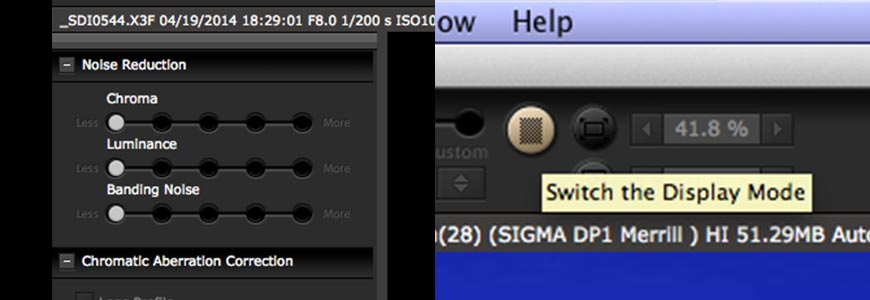
With all that turned on and off, one can live with Photo Pro 6.0.5. It obviously won’t be as fast as working with OOC JPEGs, something the DPs do and I don’t recommend; you’ll loose all the resolution and colour depth. And it obviously take looong 15 seconds to export each file after all, as 45 million photodiodes data take a lot of processing, no matter the 4704×3116 final size. But Sigma is on the right direction with Photo Pro 6 and it’s not an argument against the cameras. Get over it!
In summary: controversial technology, no special functions and sluggish software. Is there anything positive about Sigma cameras with Foveon X3 sensors? Oh boy there is, and it is its image quality. Let’s take if out of the way: these cameras delivers files with more resolution than any similar Bayer sensor, with unreliable sharpness and details for a “tridimensional look” per pixel, with real colours that no other system can match. No Fuji X-Trans, no full frame 135, nor 16-bit medium formats; none can do colours as Sigma’s Foveon cameras.
And let’s make other thing clear: “image quality” is a generic term that most people use to get “better photos” without learning how to shoot. I’m not talking about that “image quality”. I’m talking about 1) raw resolution for prints; 2) faithful colours with exact values of red, green and blue; 3) and clear lenses with perfect contrast, with fourteen streaks stars on the highlights. With no light, no technique and no interesting subject, I’m sorry, but no “image quality” will save you.
But will these qualities make any difference? If you religiously print your photos with at least 1m x 66cm at 100dpi for close appreciation, on a calibrated colour environment, yes, the Sigmas DP Merrill will make all the difference for a fraction of the cost of a digital back. Blues will be dark and deep. Yellows will look brownish. And reds can almost bleed, hard to print even under some fine art standards. If you plan to shoot and post it on Facebook, get out!
Let’s start with the Foveon pixel resolution, it show a major advantage when you compare traditional cameras side by side, with the same resolution and focal length. The Sigmas have a level of micro contrast in each pixel that you can see every grain of sand in a dune; each hair on animals fur; and graphic contours look almost vector art on screen, things that no Bayer camera can do. Seeing is believing and the resolution is Foveon’s greatest advantage.
Colours are essentially different from Foveon cameras as absolute R, G and B values are measured in every pixel, with no computer interpolation nor “manufacturer colour science” applied. You always listen me saying about Canon’s EOS orangeish-pink skin tones, and Nikon’s greenish colour casts. Its differences are from every camera and balance the rest of the frame. But not no Foveon, as exact colour values allow for just some “weight selection” for each tone:
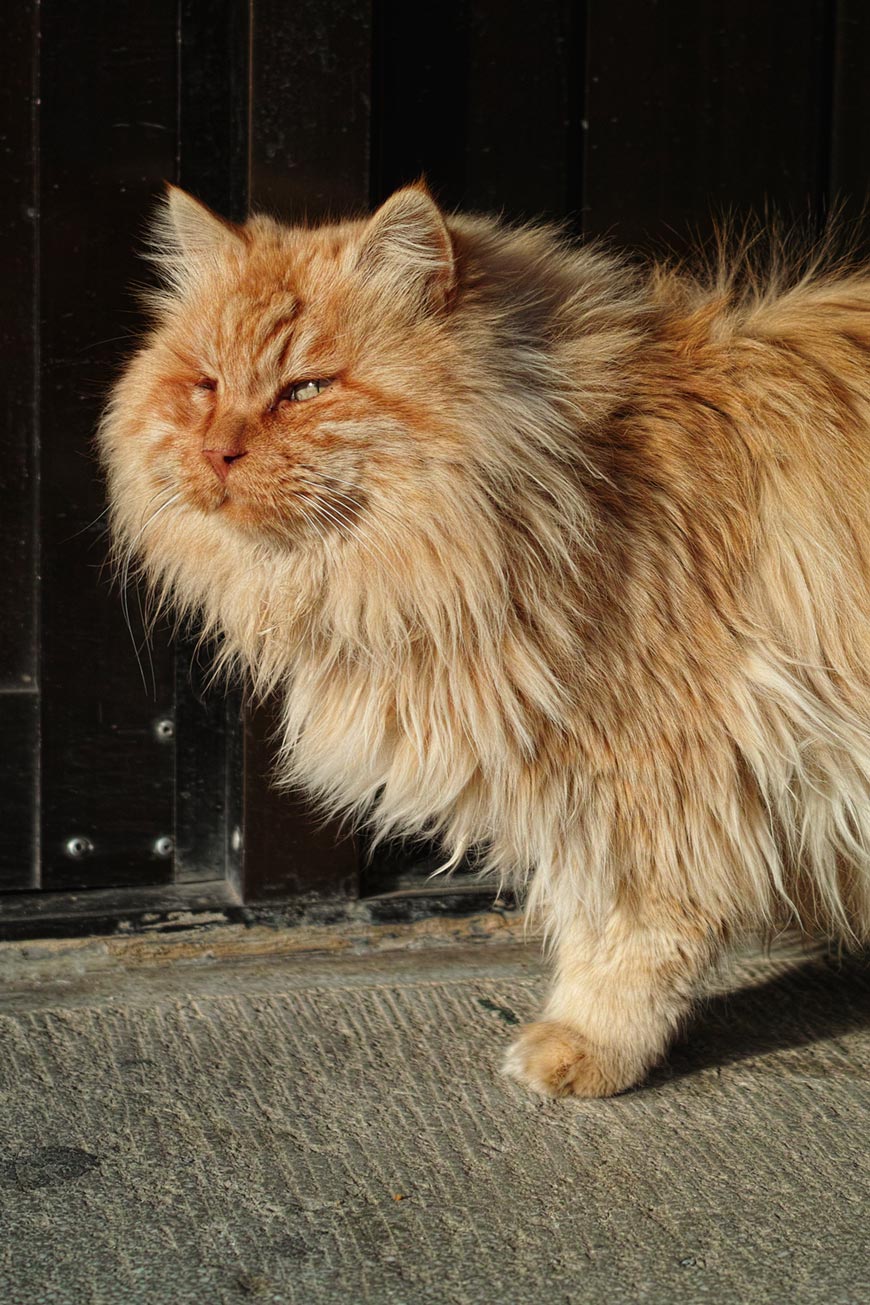
“Cat” with the DP2M at f/2.8 1/1250 ISO100. Another cat raw file available at Patreon.
And Sigma did its best job putting their best prime lenses on each camera, delivering close to perfection on the wide angle DP1M; with some lateral CA and astigmatism. The absolute perfection on the standard DP2M; vlog do zack’s best files ever. And I’m still getting used to the longer reach of the DP3M, with some out of focus axial CA and different apertures for longer depth of field. Besides all that the geometric distortion is low, the bokeh is pleasing, and wide open at f/2.8 all lenses are flawless, nothing close to at least US$1000 (just lens) from Canon or Nikon.
On the other hand the idea to use a “stacked pixel” sensor doesn’t really welcome low light shooting, and the Foveon X3 suffers on the shadows and high ISOs. There’s significant loss of performance outside of ISO100, color noise on the shadows as soon as ISO200, dull colours at ISO400, fatal color errors at ISO800, and there’s no reason to shoot over that. Sigma did try to push the ISO1600 with a good black and white conversion that solves most of the color errors, but even still the details are not there. The bottom line is these cameras were made for ISO100 or 400.
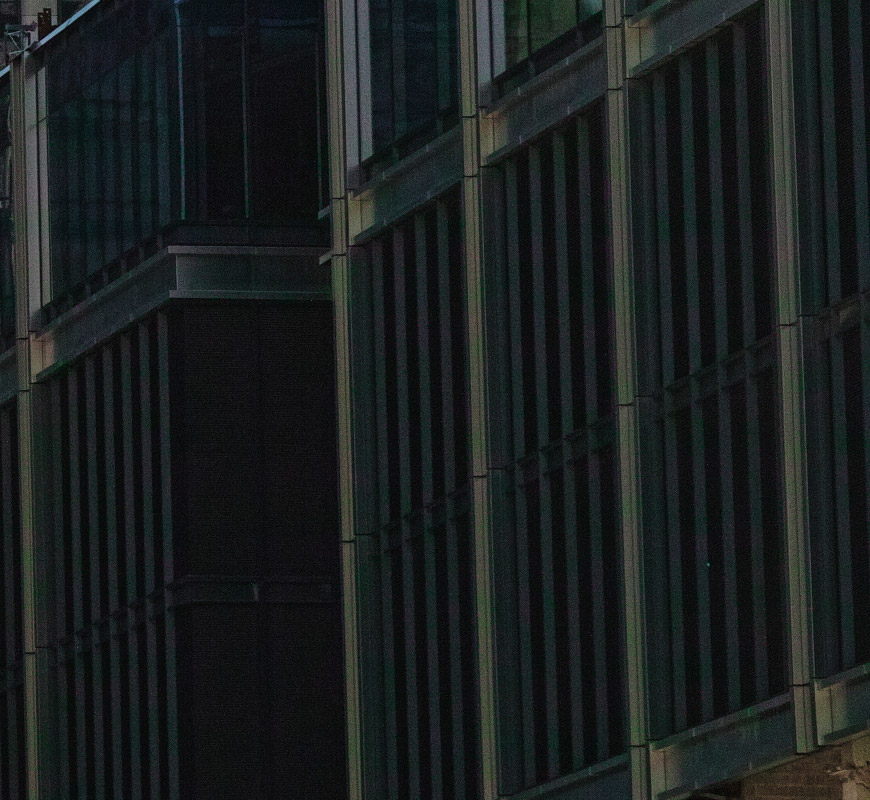
100% crop, at ISO200 the shadows are filled with colour noise
And at ISO100 some banding appears depending on the scene contrast, with a visible pattern even on well exposed areas. I suspect it’s from some electrons leaking between the pixels, as it happens only on photos with distinct light and shadow areas, or when using a high speed readout. There’s even an specific “noise banding” reduction o Sigma’s Photo Pro to get rid of it, but it does so losing some details as well. Again, you can’t avoid and it’s an issue with your photos.
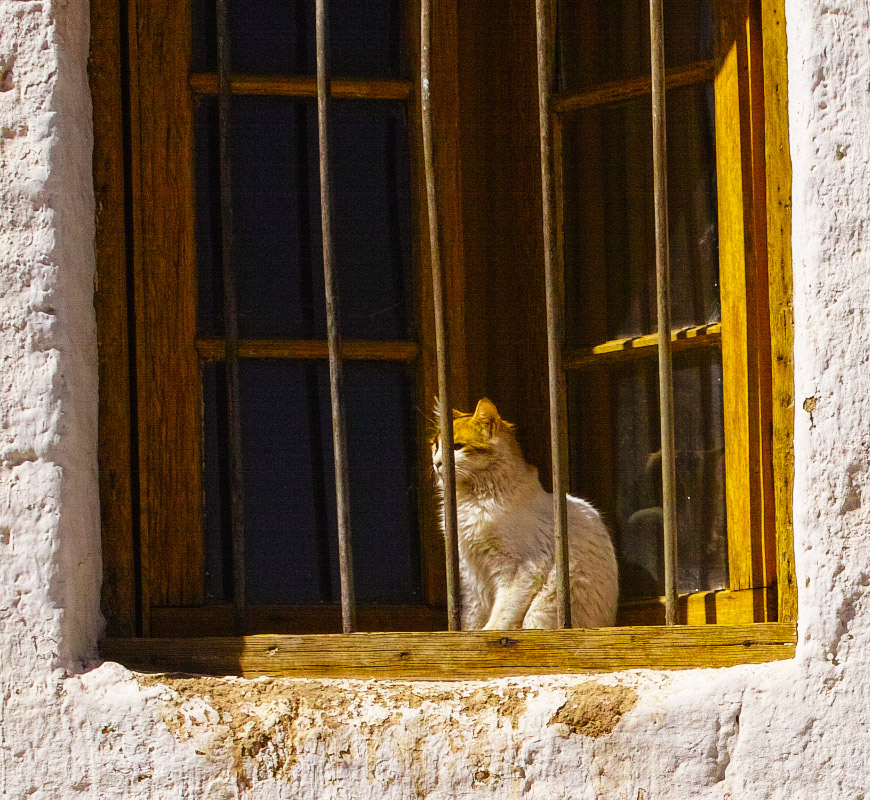
100% crop, banding on the shadows…

100% crop, and banding on the highlights, even at ISO100.
Another final weird flaw happens with the flaring. When you point the camera to some light source, a pattern of coloured circles appear on the photo. Nobody can really explain it as all DP# Merrill suffer from it, so it’s not a problem with the lenses; it’s the sensor. And you can’t really avoid it as it comes and goes. At least you can see it happening prior to shooting and try to fix it: change your position, or cover the light source, or give up shooting it all together.
In the end the sharpness and details are Sigma’s biggest triumph with the Foveon X3 technology, but unfortunately it won’t make much of a difference for 99% of the market. Side by side, the resolving power of the Merrill generation of DP cameras is equivalent to a 30MP Bayer sensor, as the RGGB mosaic register only 50% of detail data. So no one has done something similar yet, besides Samsung’s APS-C NX1 coming close at 28MP. Pixel per pixel nothing comes close to Foveon X3’s. And the colours are a step ahead everything else although the market also prefers Canon’s and Nikon’s colour science; anyone with a “brownish” portrait won’t be very happy.
And it all come with a high price tag. This technology is too new and the processing is just not there, not even with two chips. The ISO performance above 400 is unacceptable, begging for exact exposures. And each DP# Merrill costs US$700 (US$1000 at launch), costing over US$2100 + taxes for a limited three lenses set. Or you can purchase the DSLR Sigma SD1 Merrill with the same imager for US$1999 (was US$10.000 at launch!), but no zoom lens can really deliver the goods for it.
But I’m converted. I just can’t look at another “Bayer photo” with the same eyes after shooting with the Foveon X3 sensor; that’s why I bought all three DP Merrills. If they’re going to take the place of my Bayer DSLRs and all its lenses? No. If I find it cool to shoot 70 photos per battery pack, the sluggish software and no hope for high ISOs? No way. But if I have the chance to find some interesting subjects on the way and I’m sure I’ll be printing these photos, I’ll take the Sigmas DP Merrill with me. Nothing comes close to its raw pixel performance. Nice shooting